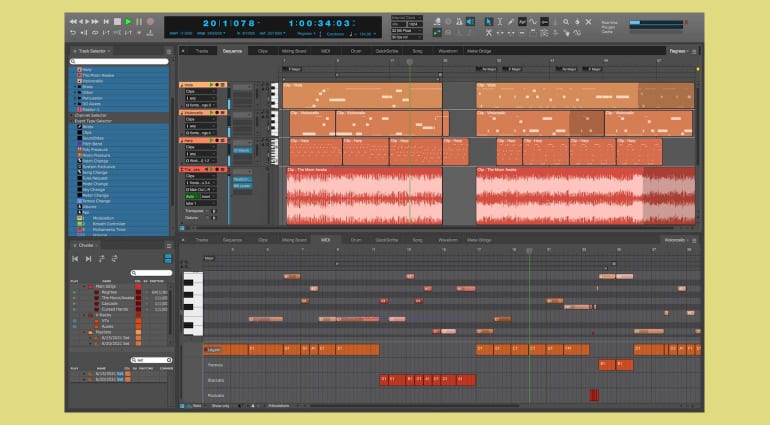
These make great starting points for further programming.

As a bonus it also comes with 120 electronic dance music presets from synth expert Erik Norlander. With a single intuitive window it looks and sounds like a winner. It has three oscillators, two multimode filters, six LFOs and four ADSHR. Inspired by the likes of the Prophet-5, PPG Wave and Moog Modular it combines subtractive, wavetable, frequency modulation (FM), amplitude modulation (AM) and analogue emulation. Both have MusicXML support.ĮDM Guru Perhaps the most significant new feature in Digital Performer 9 is the new MX4 hybrid synthesizer.

On the scoring front, Logic’s editor is more comprehensive. Both provide a decent array of instruments and plug-ins, although Logic has always excelled in this area. Both programs have had multiple automation lanes in their main sequencing pages for a long time.Ĭubase, however, also has this feature in its excellent MIDI editor while Logic and DP don’t. Both, like DP9, are mature and well featured in the three key areas, MIDI, audio and scoring. Now, Digital Performer 9 boasts a new MusicXML export feature, so scores can be imported into programs such as Finale and Sibelius, without losing QuickScribe’s interpretation.Īlternatives There are a good many DAWs around these days but Logic 10 and Cubase 8 are, arguably, the main rivals to Digital Performer 9. It’s almost always accurate and a huge timesaver because there’s virtually no clean-up operation required.

Of all the DAWs that have a music notation score, Digital Performer’s QuickScribe is the best at transcribing non-quantized MIDI data. It’s a simple matter of clicking a learn button and moving a control on the MIDI controller device. In Digital Performer 9, Custom Consoles is now used to implement a new Learn Controller feature that enables the mapping of MIDI controller knobs, faders and switches to audio plug-in parameters and bus send knobs in the mixer. It’s a really useful addition and brings Digital Performer in line with Cubase, which has had this feature for some time.įor a long while Digital Performer has had a powerful Custom Consoles feature for generating, transforming and monitoring MIDI continuous controller data. They require MIDI tracks to run them and within this new command the MIDI tracks can be automatically generated for particular instruments – a real timesaver.Īutomation editing has also been improved with the data, audio or MIDI, now available in separate lanes below a track. Instrument tracks in Digital Performer don’t carry MIDI data as in some other DAWs. The process of adding tracks has been streamlined with a new Create Tracks command for adding many different types of tracks in one fell swoop, a group of MIDI, audio and instrument tracks, for example. However it’s used, it’s a very welcome new feature. Now that it’s there it can be used correctively to temporarily mute notes in a track or, creatively, to experiment with interesting rhythmic patterns. Quite why MOTU took so long to add such a basic and very useful tool is a mystery.

#Motu digital performer 7 review upgrade
Although not a massive new feature upgrade in terms of numbers, there are several major enhancements designed to improve the general workflow and heading the list is the inclusion of a MIDI mute tool, which comes as a surprise because users have been requesting one for years without success.


 0 kommentar(er)
0 kommentar(er)
